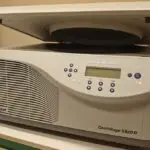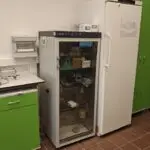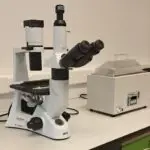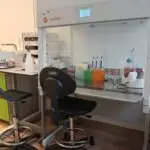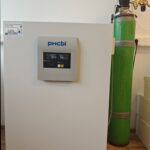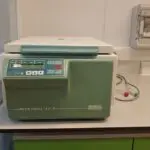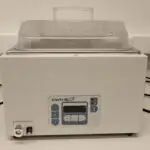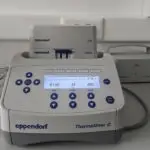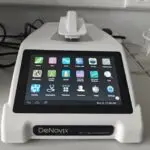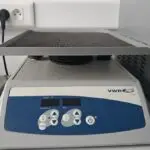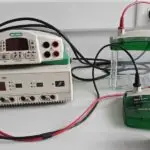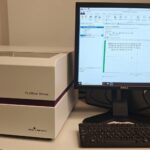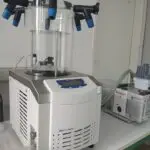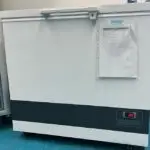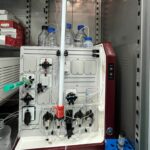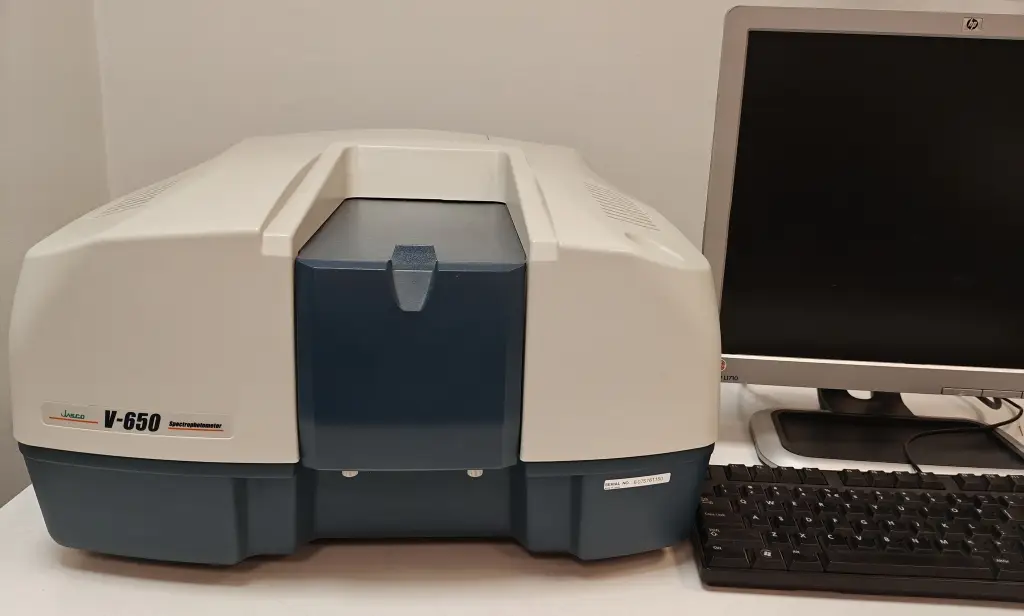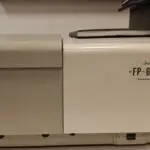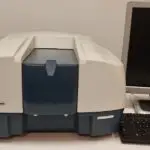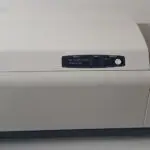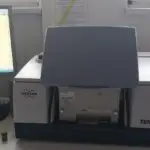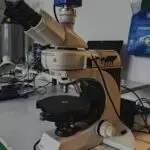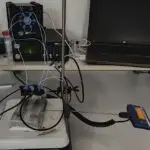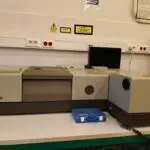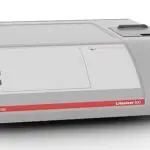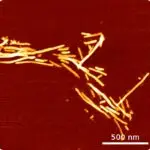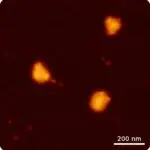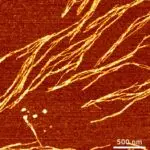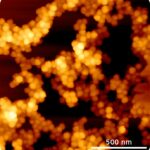Cell & Biochemical laboratory
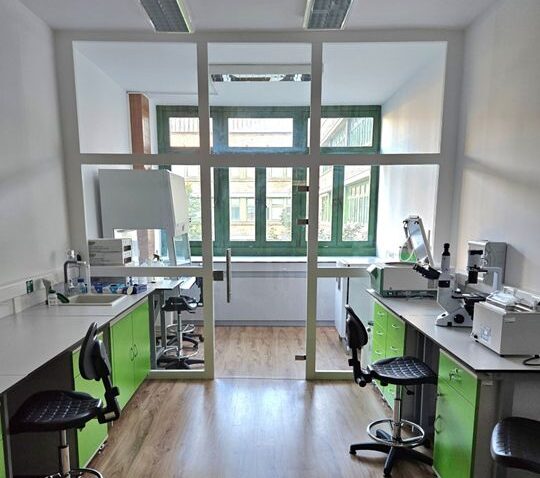
Cell and Biochemical laboratory
Cell Toxicity/Survival Tests - testing the toxicity of various biological and physical factors, e.g. nanoparticles. Available cell lines: HeLa
- MTT tests (based on the conversion of tetrazolium salt to formazan)
- Clonogenic tests (also known as colony count tests)
- Trypan blue staining – stains dead cells
- Sample preparation: filtration, dialysis, centrifugation, temp. Incubation with shaking
- Concentration measurement of proteins and nucleic acids
- Protein aggregation kinetic assays
- Protein and nucleic acid electrophoresis
- PHCBI incubator with CO2 atmosphere MCO-170AC
- water bath,
- inverted phase contrast microscope with a set of lenses and IB-100 LED digital camera by Delta optical;
- laminar flow cabinet class A2 II safety class BIO 100 by Alpina;
- aspirator FTA-1 with glass bottle;
- Hettich Universal 32 centrifuge with swing-out rotor;
- FLUOstar Omega plate reader with optical grating and a solid-state array detector for ultrafast whole spectrum recording: UV-VIS spectroscopy, Fluorescence measurement (with filters), FL polarization, Luminescence measurements
- Biorad Mini-Protean protein electrophoresis system with power supply
- Horizontal nucleic acid electrophoresis equipment
- Denovix DS11 ultra low-volume UV-VIS spectrometer (1-2 𝝁l)
- Hydrolab ultra pure water system
- -20oC freezer for sample storage
Chemial laboratory
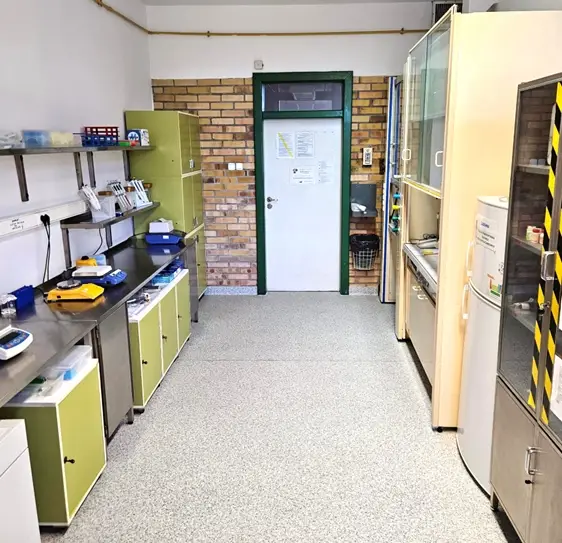
Chemical laboratory
Preparatory work: weighing, dissolving, evaporating, adjusting pH, degassing, calcination, etc.
Nanoparticle synthesis
Equipment:
- Hydrolab system (ultra pure water)
- magnetic stirrers,
- laboratory scales,
- fume hoods,
- refrigerator, etc.
Chromatography
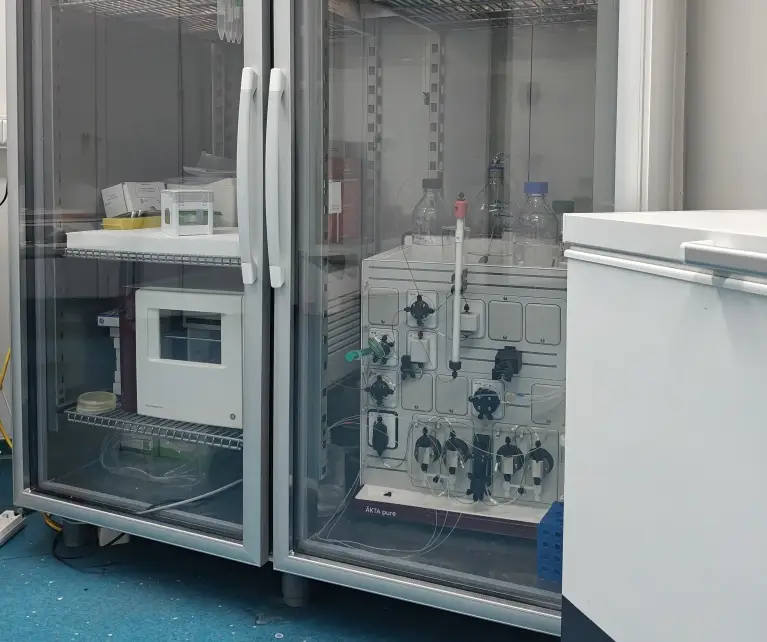
Chromatography laboratory
Protein and nucleic acid purification by chromatographic techniques
- Size Exclusion Chromatography (SEC)
- Ion exchange (IEX)
- Affinity chromatography (HisTag proteins etc.)
- Liquid chromatography system – Äkta Pure L (GE healthcare)
- Lyophilize Christ Alpha 1-2 LD Plus (lowest temp. -55oC)
- -80oC freezer
Spectroscopic laboratory
Small Angle X-ray Scattering
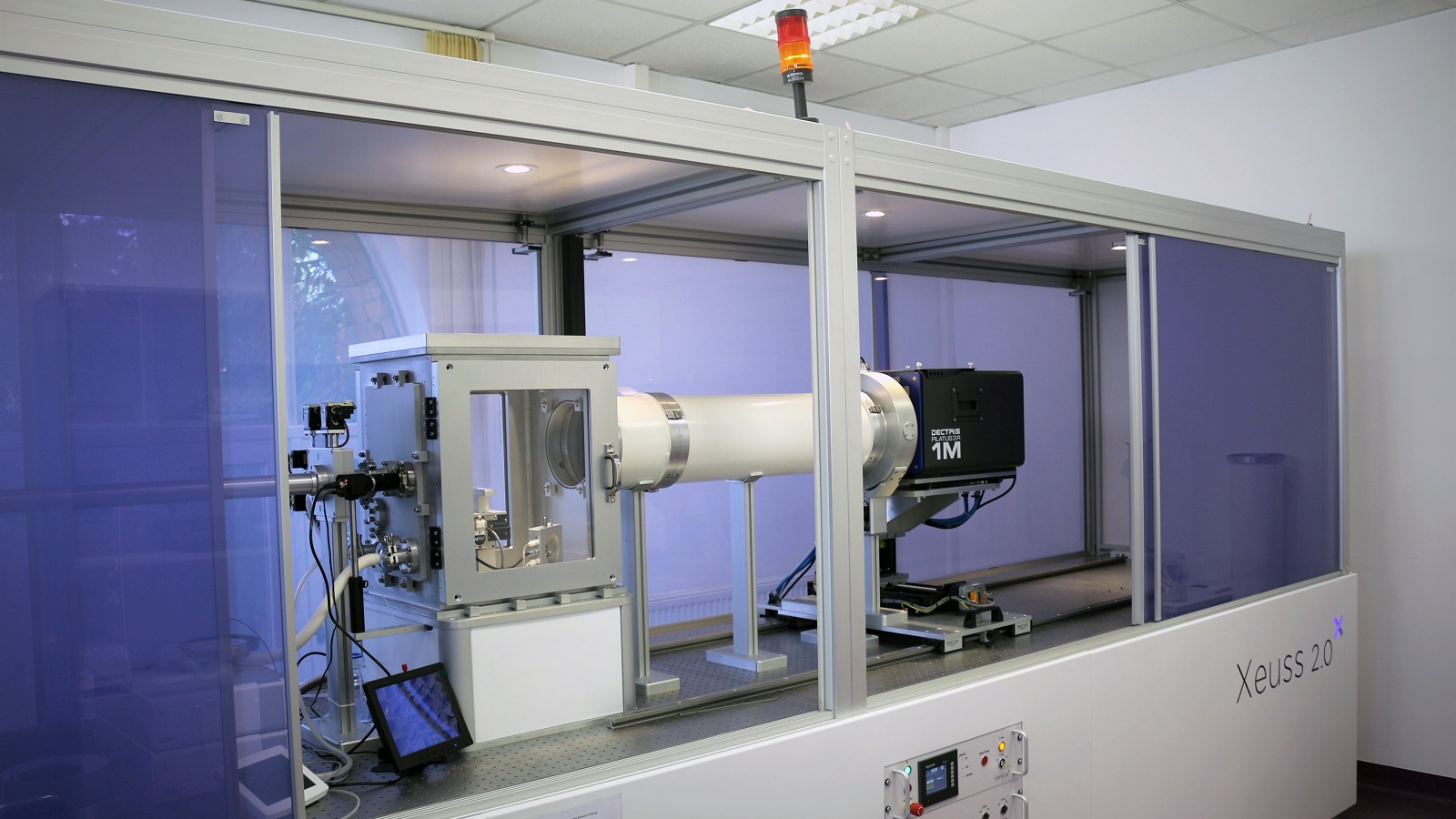
Small Angle X-ray Scattering Laboratory
Sample characterization by small angle-x-ray scattering (with optional WAXS setup)
Xeuss 2.0 SAXS system (Xenocs) with MetalJet liquid metal (gallium alloy) anode and 2D semiconductor CMOS detector Pilatus R 1M
- Biopolymers in solution: proteins, nucleic acid etc.
- Lipids and surfactant systems
- Polymers
- Solids, gels and other soft matter systems
- Ionic liquids
- Nanoparticles
- Thin layer systems( GISAXS in tests)
Sample environments
- Low noise, low volume (30𝝁l) liquid sample cell
- Liquid sample changer (in tests)
- Linkam sample holder for temperature measurements in glass or quartz capillaries temp. range -195°C to 350°C (with possibilities to measure powders and gels in home made attachment)
- Grazing Incidens SAXS (GI-SAXS) stage
- Standard holders for solid samples and liquids (ambient conditions)
Atomic Force Microscopy & Microscopy
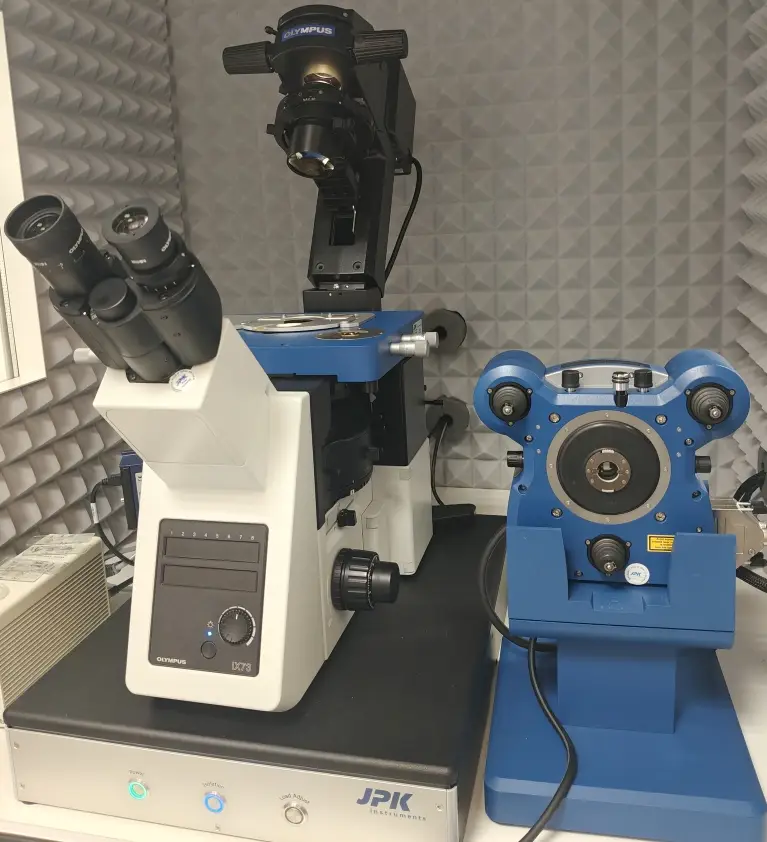
Atomic Force Microscope
AFM Microscope Nanowizard IV, Bruker
Measuring modes:
- Contact mode
- Non-contact
- AC mode (tapping)
- QI imaging (quantitative imaging)
- Force spectroscopy
Direct overlay software (combining optical or fluorescent image with AFM image)
Selected applications
- Nanotechnology: Nanoparticle characterization, nanolithography, manipulation of nanostructures.
- Biology: Biomolecule imaging, cell surface analysis, protein unfolding.
- Materials Science: Surface roughness, thin film analysis, phase imaging.
- Chemistry: Surface chemistry, single-molecule reactions.
- Medicine: Tissue mechanics, drug delivery, biofilm studies.
- Polymers: Morphology, elasticity, and viscoelasticity.
SMAUG
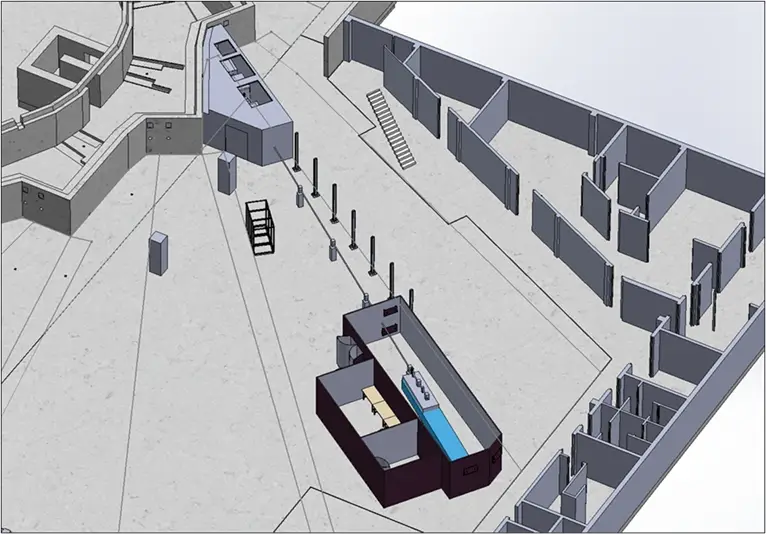
SMAUG beamline (Small Angle X-ray Scattering) - under constraction
SOLARIS National Synchrotron Radiation Centre with new experimental hall (Jagiellonian University, Kracow)
SMAUG beam line (Synchrotron radiation 6-15 keV (0.2067 nm – 0.0827 nm, Microfocus sources: CuKa 8.08 keV (0.154178 nm) & MoKa 17.4 keV (0.071073 nm))
- bioSAXS (studies of biological systems in solutions),
- SEC-SAXS (combined SAXS studies with simultaneous chromatographic separation),
- SAXS static measurements (including tests at low and high temperatures, magnetic or electric field)
- SAXS liquid measurements at high pressures.

Dielectric Spectroscopy&Differential Scanning Calorimetry
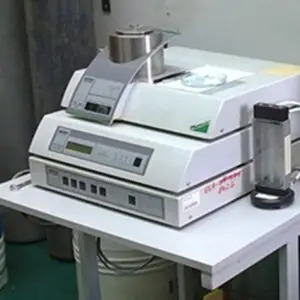
Differential Scanning Calorimeter - Netzch DSC 204 Phoenix®
- Temperature range: -180 to 700 °C,
- High heating and cooling rates,
- Gold-plated measuring cell,
- Different interchangeable sensors,
- Very stable baseline,
- Extremely short time constant with high sensitivity,
- Versatile cooling devices
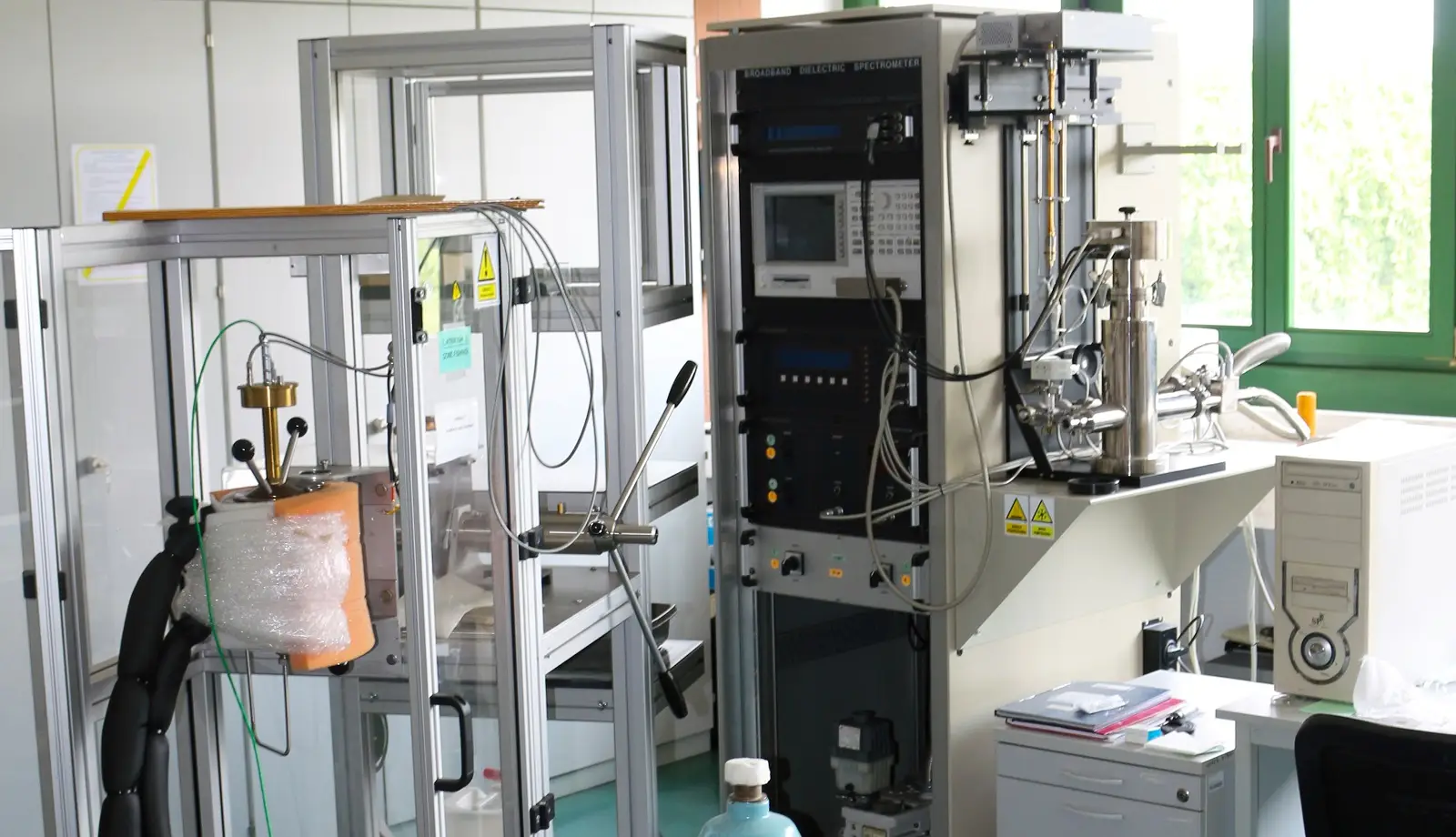
Broadband Dielectric Spectrometer - Novocontrol BDS-80
The dielectric spectrometer allows to study molecular reorientations and relaxation processes in liquids and solids. The molecular dynamics can be studied in the frequency range spanning from 10-2 Hz to 1,8×109 Hz and in the temperature range from -150 to 500 °C.
The dielectric spectrometer BDS-80 is equipped with two types of probeheads:
- BDC-S (Alpha Analyzer) probehead, which is used for the measurements in the frequency range from 1×10-2 Hz to 3×106 Hz
- Hewlett Packard 4291B probehead, designed for measurements above 1×106 Hz and up to 1,8×109 Hz.
Rheological laboratory
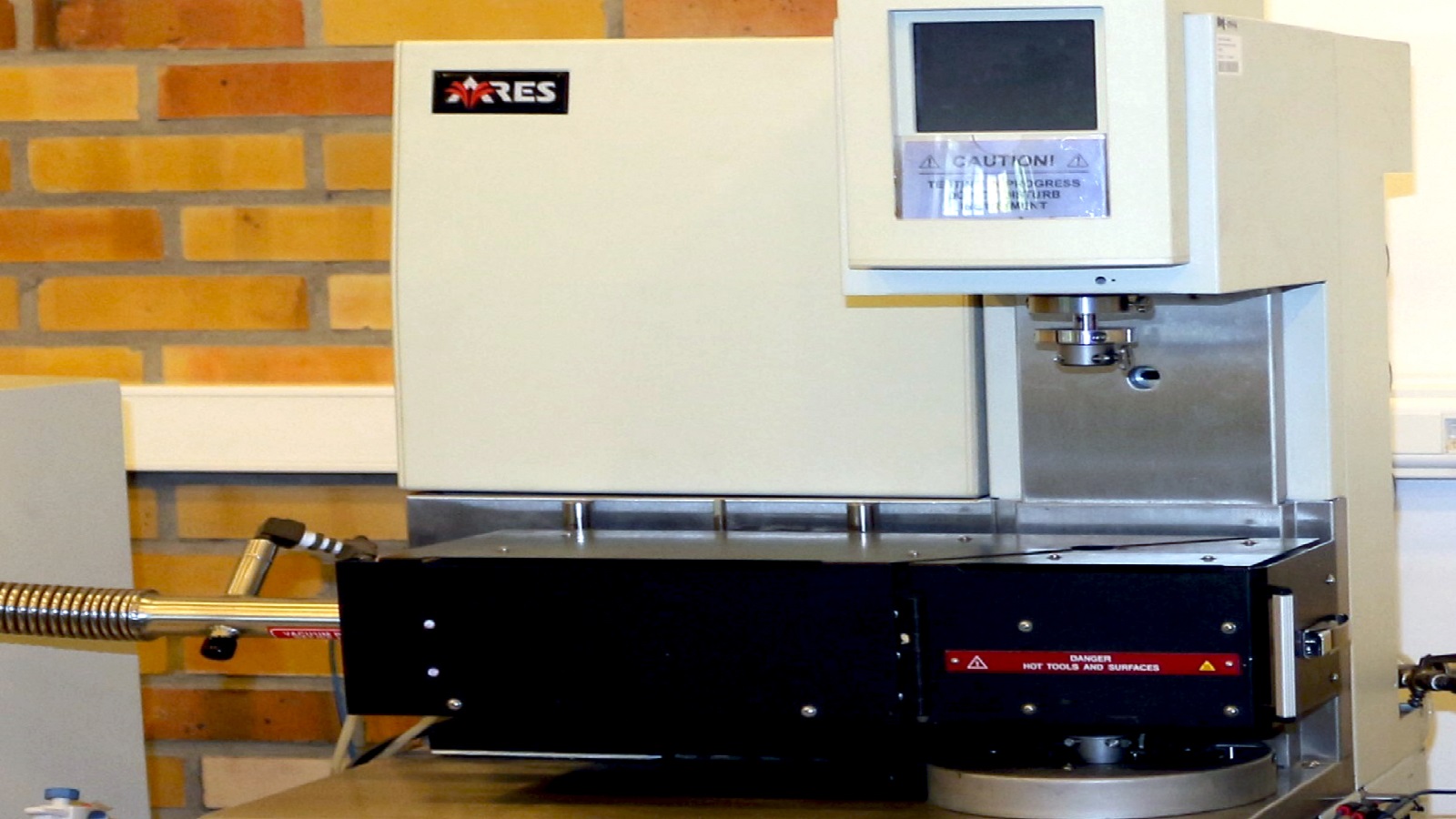
ARES Rheometer for testing solids
ARES Rheometer for testing solids
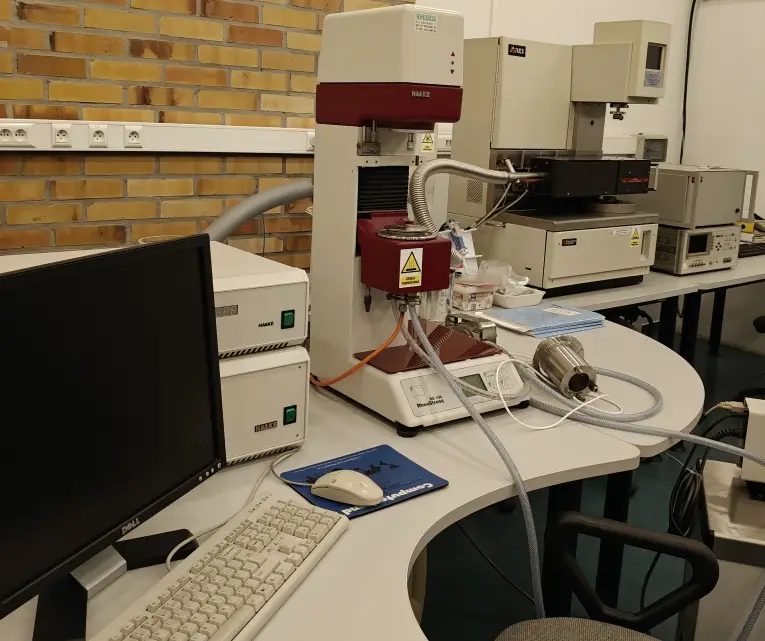
RheoStress RS150 HAAKE
RheoStress RS150 HAAKE with Temperature controler TC 501 and Cooling system DC-50 with K-75 circulator
RS 150 is equipped in three measuring modes:
- CS (here a shear stress is preset and the resulting shear rate is measured)
- CR (here a sample of material is deformed and the resulting stress is measured)
- OSC (non-destructive, oscillation mode)
NMR laboratories
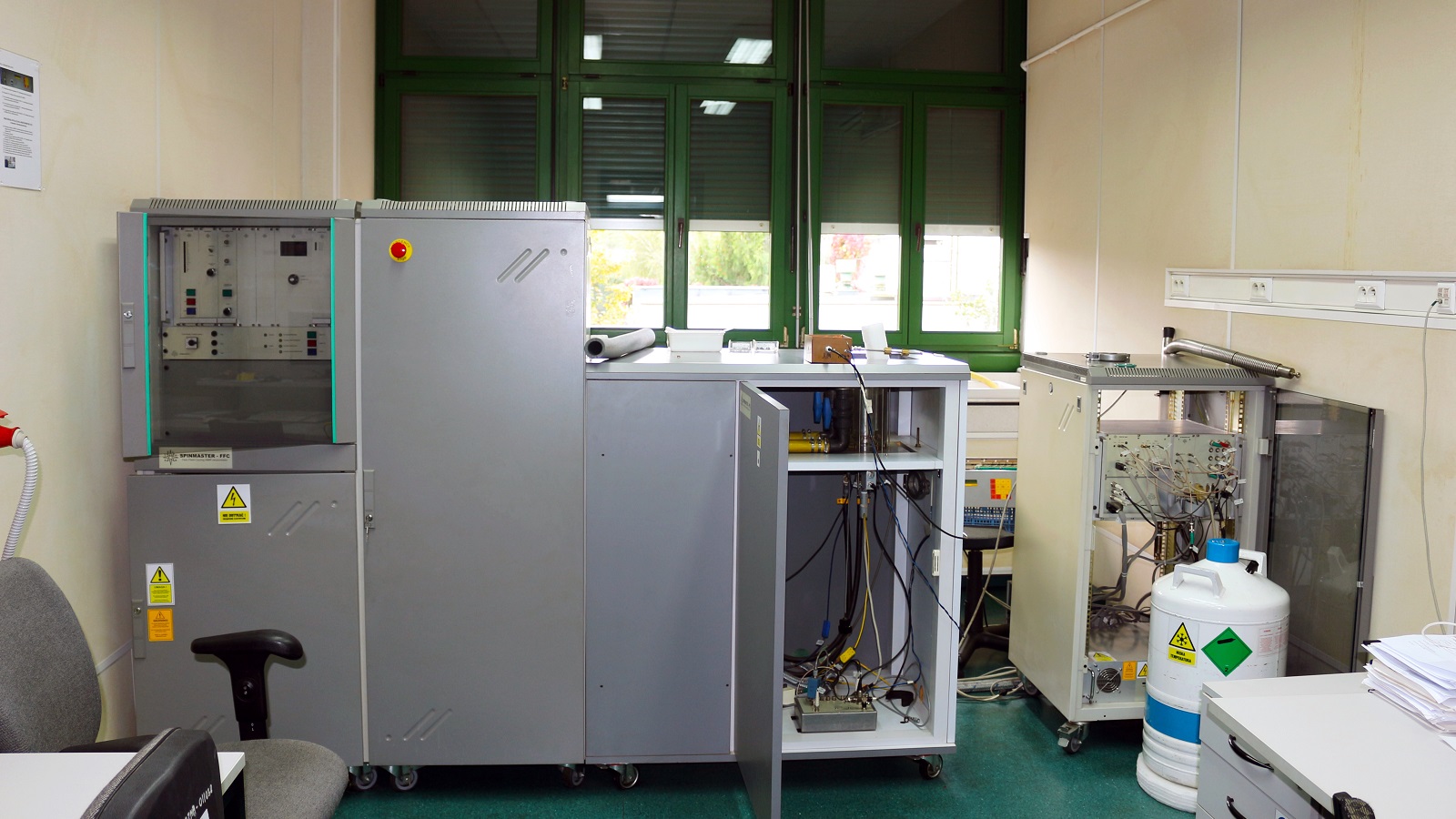
Stelar
NMR Fast Field Cycling Relaxometer Fast Field Cycling (FFC) spectrometer (model Stelar - Spinmaster 2000) is designed for the measurements of 1H-NMR spin-lattice (T1) relaxation time in the Larmor frequency range spanning from 8 kHz up to 20 MHz. (read more at ZFM old page)
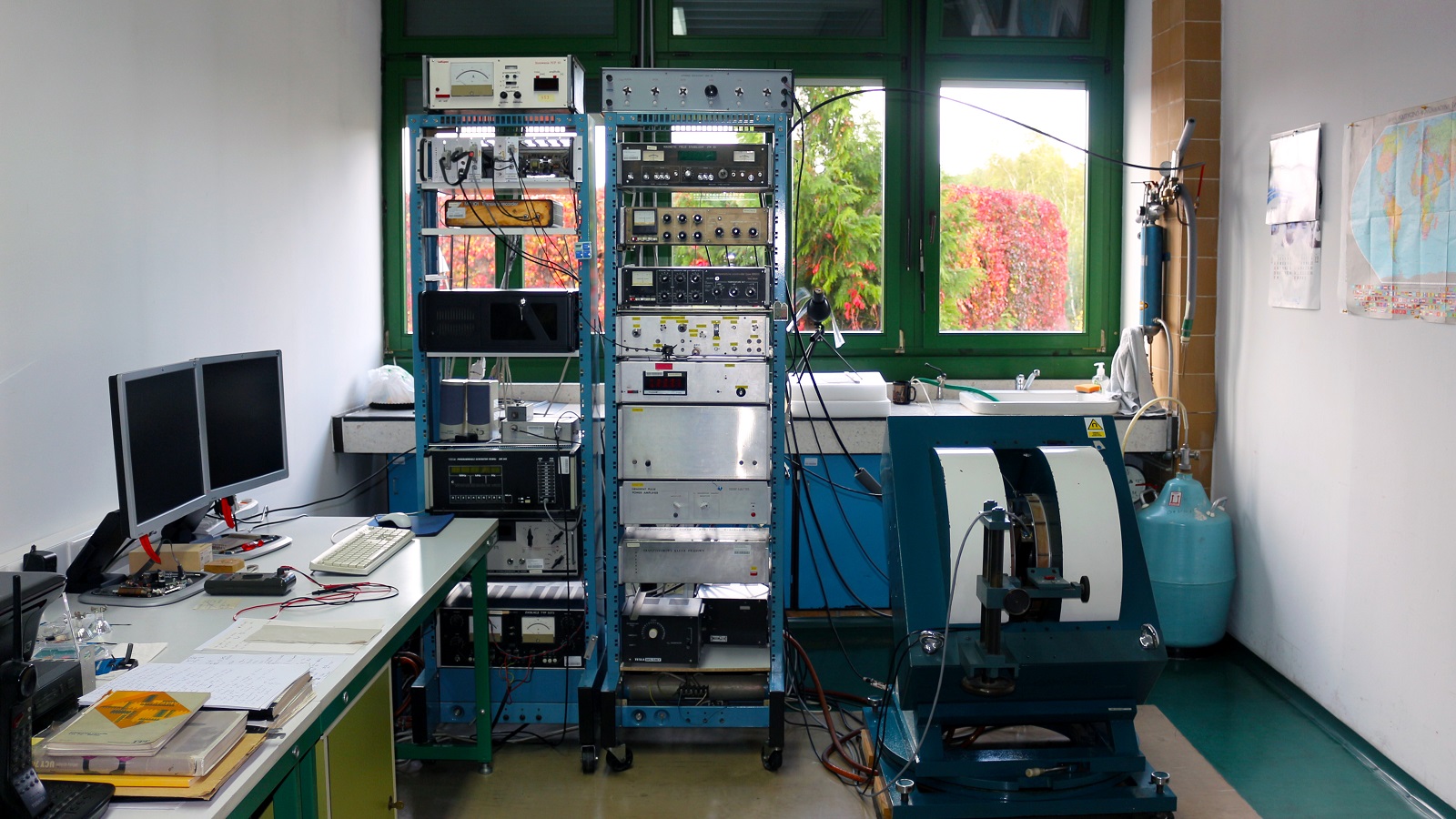
NMR
Liquids Modecular Diffussion Spectrometer Low field, 16.5 MHz, NMR spin-echo spectrometer for relaxation times, T1 , T2 , and translational diffusion coefficient D, measurements. Mainly use for characterization of molecular dynamics and relaxing properties of PE agents
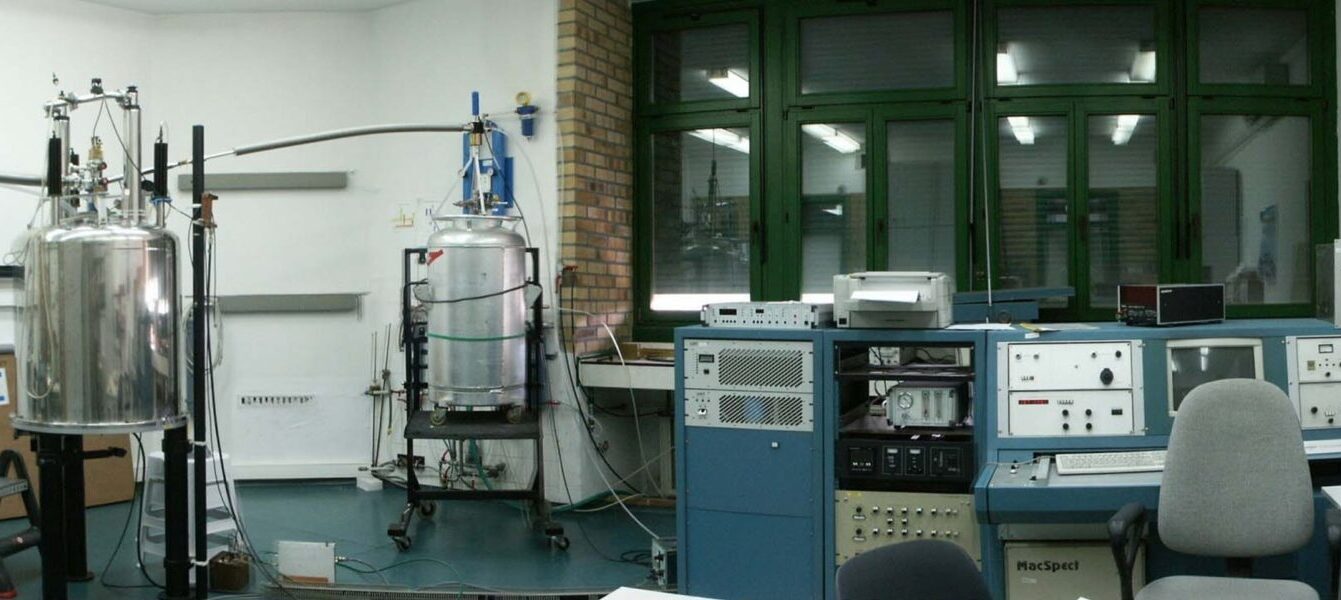
Bruker CXP 200 MHz Spectrometer
The pulse Bruker CXP 200 MHz spectrometer can work with two independent high power broadband channels. Two exchangeable pulse transmitters operating at 1 kW power (at 30.7 and at 200 MHz, respectively), and one 1 kW AMT transmitter (tuned in the range 6-200 MHz), which also in the continuous wave mode can be used. ... (read more at ZFM old page)
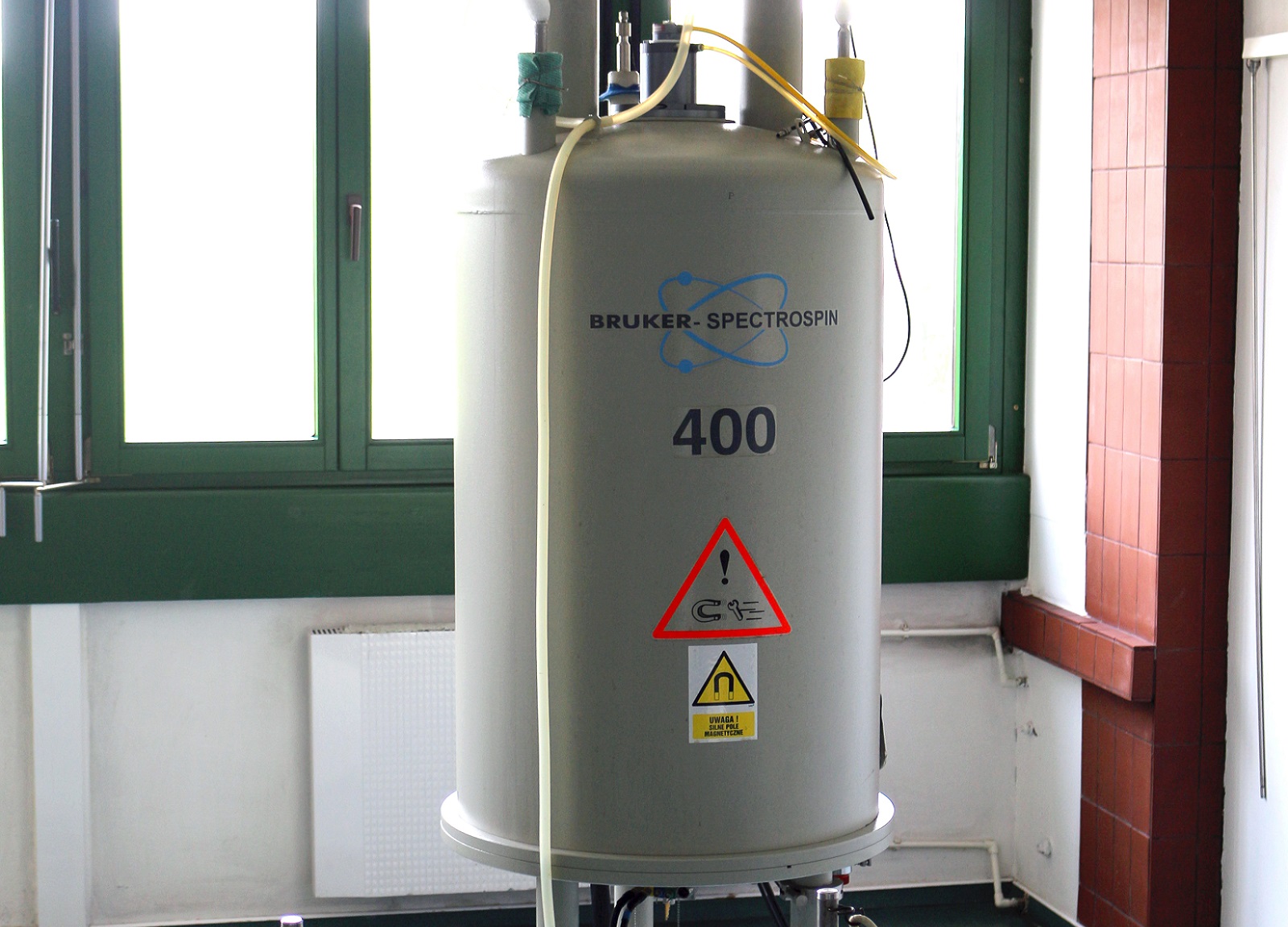
Bruker Avance DMX 400 MHz Spectrometer
The Bruker Avance DMX 400 MHz spectrometer is a fully digital instrument, equipped with three independent high power broadband channels. The spectrometer employs a Bruker-Spectrospin cryogenic superconducting Wide-Bore magnet with the inner diameter of 89 mm and shim upper adapter with a frame cooling system. The spectrometer can be applied in typical 1D and 2D (one- and two-dimensional) experiments in a wide range of spectroscopic nuclei in the standard and inverse mode. .... (for more go to ZFM old page)

